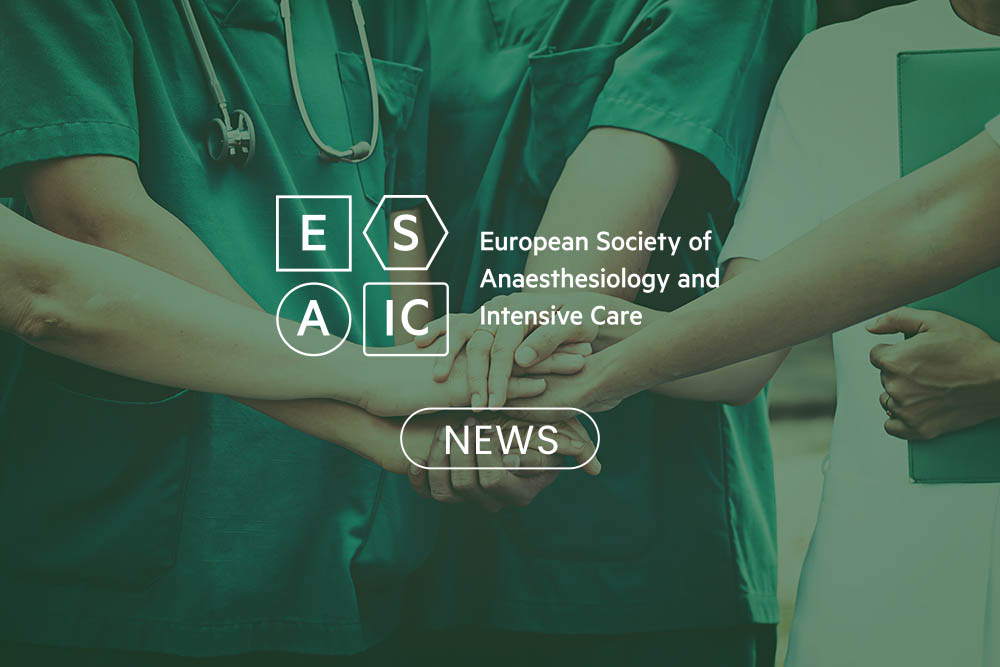Congress Newsletter 2021
Best Abstract Competition 2021 – Results
Each year our panel of expert judges finds it very difficult to pick a winner, second and third place from the finalists, and this year’s selection was no exception. The judging panel of former ESAIC President Daniela Filipescu (Romania) together with Ana Kowark (Germany) and Mona Momeni (Belgium) had eight high-quality pieces to choose from. After a lengthy question and answer and time to deliberate, they chose the winners.
All 8 of the abstracts that reached the final can be read by clicking here

1st place: Lara Braun, University Hospital Bonn, Germany – 3000 Euros
Abstract: BAPC-2 Increased cerebral blood flow despite reduced oximetry during cardiopulmonary bypass suggests cerebral perfusion mismatches in patients developing postoperative delirium
Lara is about to finish her first year at University Hospital Bonn and her aim is to become a visceral surgeon and to continue working on research projects, especially in the form of clinical trials.
She started the work on this project as part of her doctorate. The Department of Anesthesiology at the University Hospital in Bonn has been conducting a very big study on postoperative delirium, called PROPDESC. As a part of that study, a group started looking at the postoperative delirium in cardiac surgery patients, especially examining the changes in perfusion during extracorporal circulation. Lara explains: “As a result, it could be shown that cerebral hyperperfusion plays an important role in the pathogenesis of postoperative delirium in cardiac surgery patients. To further examine this phenomenon in patients undergoing on-pump open-heart surgery we began our study where we continuously measured the cerebral blood flow during cardiopulmonary bypass.”

Abstract: BAPC-7 Virtual reality (VR) and 3D printing in clinical anaesthesia; 18 months experience in a large, single medical center
Ruth would like to develop 3D printing and VR further to find all the areas in preoperative anaesthesia planning where they can be beneficial. She says: “Then I would like to make 3D printing and VR more accessible, so every anaesthesiologist can use them to solve airway challenges, especially those in low and middle-income countries.”
To view a photo of the 3D printed airways in Dr Shaylor’s abstract, click here
3rd place: Dr Christoph Pennings, Maastricht University Medical Centre, Netherlands – 1000 Euros
BAPC-8 Anaesthesia as a risk factor for cognitive decline: the effects of anaesthesia on long term cognitive functioning. A prospective cohort study

He adds: “There are two reasons why I am interested in cognitive functioning after anaesthesia. First, after starting my residency, I noticed that following surgery under general anaesthesia there is a lot of diversity between individual patients cognitive functioning in the recovery room. It seemed like some patients are more ‘vulnerable’ than others for cognitive dysfunction. I was wondering why this would be and if it has any negative long-term effects. Secondly, I often get questions from patients before their procedure about cognitive functioning after anaesthesia. They are particularly concerned about the long-term effects of anaesthesia on their cognition, sometimes even more than for the surgery itself. Dr Carine Vossen, one of the consultant anaesthesiologists at my hospital, offered me the chance to work on the MAAS database and take a look at the effects of anaesthesia long-term cognitive functioning in the general population.”
Read More of our special newsletter covering our virtual congress









